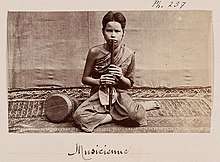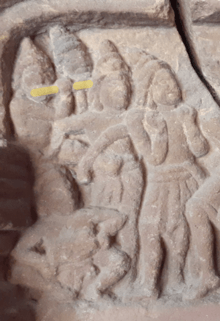Khloy
A khloy (Khmer: ខ្លុយ, Burmese: ပုလွေ, Khmer pronunciation: [kʰloj]) is an ancient traditional bamboo flute from Cambodia and more specifically the Khmer people. The khloy and other similar bamboo flutes can be found throughout Asia, due to bamboo’s abundance in the region. The khloy is a duct flute, about 15 inches (38 cm) long and 1 inch (2.5 cm) in diameter, with 8 or 9 finger holes, and a duct end where the player blows into to produce a sound.

The Cambodian khloy is often mistaken for its close relative of Thailand, the klui flute, however Khmer khloy is aged older.[1] Unlike the klui flute, the khloy is generally played solo in an informal setting. The khloy is mostly played using the pentatonic scale.
Etymology
Khloy or khluy is a Khmer word for flute. The word kluy appears on a pedestal at Kuk Prasat temple dated to 994 AD. The term kluy later transmitted into modern Khmer word khluy or khloy.[1] Whereas, the term venu (Sanskrit: flute) was inscribed on a 9th century foundation stele at Preah Ko temple.[1]
History


The earliest depiction of flute in Cambodia were seen on two lintels from Sambor Prey Kuk temple, dated to 7th century. This musical instrument was also carved on a bas relief of Phnom Bakheng from late 9th to 10th century.[1]
References
- "Flute". Site de soundsofangkor ! (in French). Retrieved 2020-03-14.